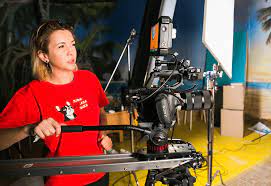Web documentary as a new multimedia format appears due to the convergence of Internet technologies and the documentary genre dating back to 1920
A single accepted approach to the definition of web documentary in the scientific literature has not been formed. When analyzing existing works, we came across different terminology – new media documentaries, web-docs, docu-games, cross-platform docs, trans-media docs, alternate realities docs, web-native docs and interactive documentaries. Sometimes these terms are used interchangeably, sometimes they are distinguished by a different level of interactivity, level of participation, level of authorial control, etc. In addition, it must be understood that a linear documentary video that was filmed using digital technologies and distributed on the Internet is considered a digital documentary video, but not interactive. Next, we will try to distinguish between the definitions of interactive documentary and web documentary. Gaudenzi S. The Living Documentary: From Representing Reality to Co-creating Reality in Digital Interactive Documentary. – Goldsmiths, 2013. – P. 72
One of the first approaches to the definition of interactive documentary is based on the idea that interactivity is the ability of users to select one or another content.
Galloway calls interactive documentary any video that uses interactivity as one of the main components of the content delivery mechanism to the audience. This approach is limited by the concept of delivery mechanism, because interactivity is also used at the stage of video conception, as well as its production.
Media researcher Kate Nash defines an interactive documentary as a piece of documentary work that is distributed over the Internet and that is multimedia and interactive.
The Spanish web documentary
specialist Gifro defines interactive online/offline applications that represent reality in terms of their own mechanisms, i.e. user-driven navigation. Gifro sees interactive documentary as a form emerging from the evolution of the traditional audiovisual documentary form. He compares this to the evolution of Web 1.0 to Web 2.0. the traditional documentary form is characterized by the principle of linearity – that is, we start from a certain point and end at a certain point, following the route set by the author (from A to B). Here the boundaries of authorship and control over discourse are well defined. In the case of an interactive documentary, the starting point is determined by the author (not always), and then the viewer selects the branches and paths of the route. The final decision belongs not to the director, but to the viewer. In addition, the authorial principle and control over discourse lose their influence.
Both in the traditional documentary video and in the new interactive form, there is participation, interaction with the audience. Only in the first case we are talking about cognitive (mental) participation, while in the second case there is physical participation. That is, linear video involves only personal interpretation and reflection from what he saw, while physical participation in interactive video involves making decisions, using navigation, using the mouse and keyboard to indicate your decision, etc.
Another important difference between the two kinds of video relates to the variability and immutability of that video. Linear video can be changed any number of times, but only in the process of creating this video, but when it is already mounted and ready, it is no longer subject to any transformations. An interactive video can change constantly, and this process does not stop.
Gifro sums it up
– interactive documentary is an interactive online or offline application that is designed to represent reality through special mechanisms such as navigation and various ways of interacting with the audience. Interactive documentary simultaneously represents reality and interacts with it, like a living organism that can change when it collides with the external environment.
After the analysis done, it becomes obvious that Interactive documentary and web documentary cannot be considered synonymous. Interactive documentary is a broader concept, including including both offline interactive projects and online ones. The predecessor of interactive video is the Aspen Movie Map project, which was presented back in 1978 at the Massachusetts Institute of Technology (USA). This film was an interactive virtual map of the Canadian city of Aspen, where the viewer could control the direction of movement, turn, click on buildings, etc. by tapping on the screen. Gaudenzi S. The Living Documentary: From Representing Reality to Co-creating Reality in Digital Interactive Documentary. – Goldsmiths, 2013. – pp. 39-42. And the Moss Landing project (1989) was officially called an interactive documentary for the first time. Gaudenzi S. The Living Documentary: From Representing Reality to Co-creating Reality in Digital Interactive Documentary. – Goldsmiths, 2013. – pp. 47-48. At the same time, both works functioned in an offline environment, like many other examples of interactive documentaries in subsequent years.
For an interactive documentary
The key characteristic is interactivity, while for a web documentary, the fact of being on the web is more important. In our work, we will define a web documentary as an interactive online project that reflects reality, which is characterized by a non-linear narrative, the user’s ability to choose the path of narrative development, as well as change content and add new content.
Interactive documentary was born at the intersection of two areas of communication – the documentary genre and digital media. The distinction between traditional documentary videos and interactive videos can be made according to the following main parameters:
- linearity / non-linearity (in traditional documentary form, the viewer starts from a certain point and ends at a certain point, following the route set by the author; in the case of interactive documentary, the starting point is often determined the author, and then the viewer chooses the branches and ways of developing the route, the final decision belongs not to the director, but to the viewer);
- cognitive participation / physical participation (linear video involves only personal interpretation and reflection from what he saw, while physical participation in interactive video involves decision making, using navigation, using the mouse and keyboard to indicate your decision, etc.);
- immutability / variability (traditional video is not subject to any transformations, interactive video can change constantly, and this process does not stop). Interactive documentary is a broader concept than web documentary, including both offline and online interactive projects, while web documentary can only exist in an online environment.
